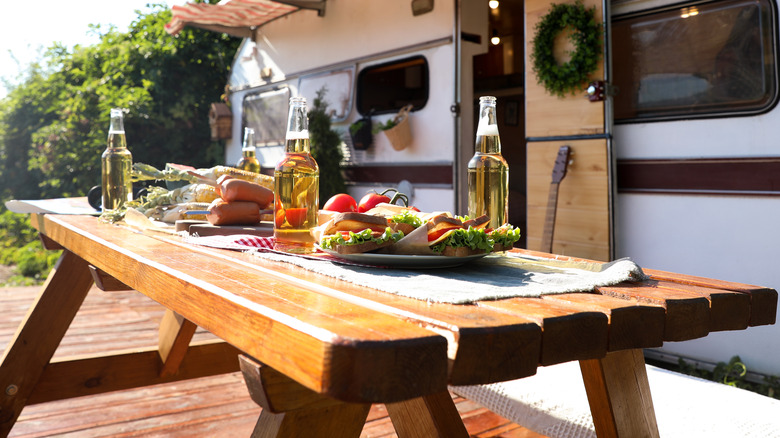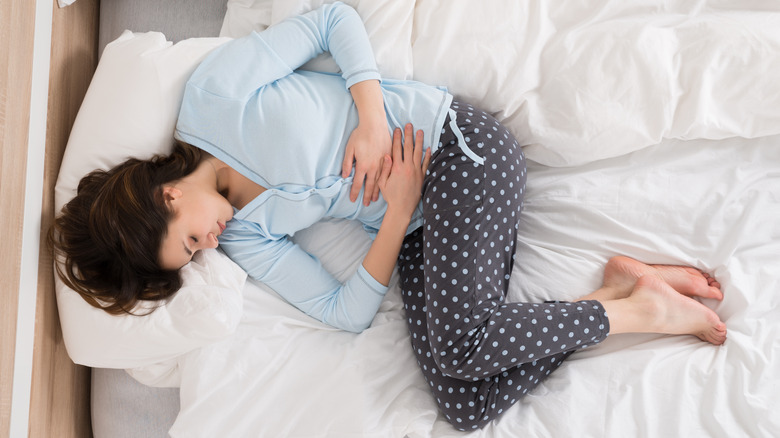Why Your Risk Of Food Poisoning Gets Higher During The Summer
Summer has its own special feeling. Warm days and crisp nights are like bits of nostalgia happening in real time. Barbecues, picnics, days in the park. Most people try to spend as much time outside as they can, soaking up the sun and the fresh air after months cooped up in the house. Everything is bright and brilliant. But there is a downside — one that can cross summer plans off your calendar for days.
When food poisoning turns up on TV or in movies, it's usually treated as a light joke. Someone gets some bad fish and they turn some shade of green before settling in on their bathroom floor. But the CDC says that it's no laughing matter. Mild cases turn your bathroom floor into your best friend, sure, but extreme cases can land you in the hospital, cause severe dehydration, and lead to brain damage, nerve damage, and even kidney failure. It's just not something you want to mess with.
Per the CDC, 48 million Americans get food poisoning every year. Of those 48 million, 128,00 end up in the hospital and 3,000 die. And according to the Docs Medical Group, the leading medical provider in Connecticut, cases of food poisoning go up every summer. But why is the risk higher in the warmer months?
Too hot to handle
For most people, summer means cookouts and picnics. But while we're relaxing, drink in hand, nibbling occasionally at a plate of food, the bacteria in the food and in the environment is hard at work. The USDA calls the temperature range between 40 and 140 degrees Fahrenheit the "Danger Zone." It's the temperature range in which bacteria grow best until they're about as catchy as the Kenny Loggins song.
After only two hours at room temperature — provided the temperature is less than 90 degrees — food is considered unsafe to eat, according to Meredith Carothers, technical information specialist for the USDA. She spoke with Eat This, Not That, saying, "More people are cooking outside at picnics, barbecues, and on camping trips. Given these circumstances, harmful bacteria have many opportunities to quickly multiply on food and get people sick."
Carothers also explained that bacteria can double in just 20 minutes. And as the temperature goes up, the length of time it can safely sit out goes down. The best remedy is to pack away perishables once everyone has gotten a plate, then bring it back out if people want more. It's more work, but it also cuts back on the chances of missing that next picnic.


